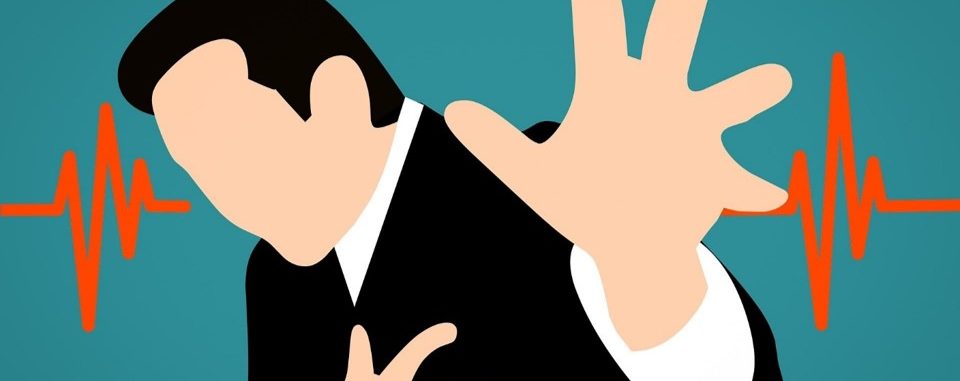Healthcare providers need to be able to recognize the symptoms, and risk factors of heart attacks (myocardial infarctions) as well as know the ECG criteria and basic treatments. This article reviews the signs and symptoms of myocardial infarctions, elaborates on the risk factors, teaches the ECG criteria of heart attacks and describes basic treatments.
What are heart attacks (myocardial infarctions)?
A heart attack is simply death of heart tissue. Blockages in the coronary arteries (arteries supplying the heart with blood and oxygen) are the major cause. These blockages are typically due to cholesterol plaques that build up within the artery. If these plaques become unstable, they tear, causing the body to try to seal them up. To seal this breech the body forms a clot in the artery. This clot then completely blocks the artery, preventing blood to flow to the heart muscle. The heart muscle then dies. Ouch!
Heart Attacks – Symptoms
The death of myocardial (heart) tissue usually causes chest pain. The pain typically feels like a tight, squeezing sensation under the breastbone (sternum). It can radiate to the neck or the left arm. Heart attack victims may be short of breath, sweaty or nauseated. Unfortunately, the first sign of a heart attack may be sudden death. Sometimes heart attacks are silent, meaning that there are no symptoms at all.
Risk Factors For Heart Attacks
Certain conditions make patients prone to heart attacks. Some factors, such as a strong family history of premature heart attacks, cannot be changed. Patients can optimize risk factors such as the use of tobacco or the lack of physical activity. Other factors, such as high cholesterol and diabetes are treated with cooperation by patients and their provider. I have always felt that if having a heart attack is inevitable a person should do what he/she can to delay it as long as possible. I
would prefer to have my heart attack at the age of 105 rather than 55.
Here is a list of common risk factors:
- Tobacco Uses
- High Blood pressure
- High cholesterol or triglycerides
- Diabetes
- Obesity
- Age (>45 years-old in men; and >55 years-old in women)
- Family history of an early heart attacks (male parent or sibling <55 years-old; female parent or sibling <65 years old)
- Lack of physical activity
- Illicit drug use
Diagnosing Heart Attacks
The first test obtained to diagnose a heart attack is an electrocardiogram (ECG). To look for evidence of heart damage, the emergency room doctors order blood tests. The medical providers may also get an echocardiogram (ultrasound of the heart) to look for areas of the heart that are not functioning. A heart catheterization is commonly performed. This test places a long thin tube through the artery in the patient’s wrist or groin. The tube is eased up to the coronary arteries and dye is injected. With the use of x-ray, the medical provider can visualize blockages. At this point the provider may be able to open the blockage with a balloon or stent (angioplasty).
ECG Changes of Heart Attacks
The sine qua non of a heart attack by electrocardiogram are Q-waves. Q waves suggest damage throughout the entire thickness of the myocardium (heart tissue). The ST and T waves indicate the timing of the myocardial infarction and they follow a typical evolutionary pattern.
Acute myocardial infarction (<24 hours old) – Q waves with ST segment elevation.
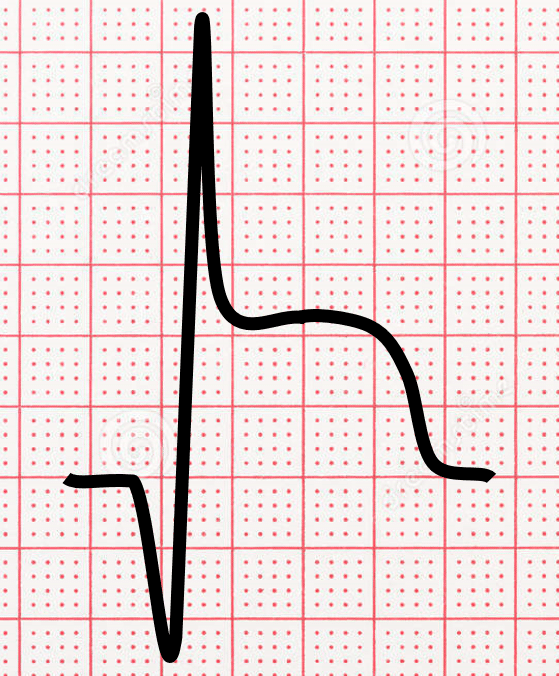
Recent myocardial infarction (24-48 hours old) – Q waves with some ST segment elevation and inverted T waves.
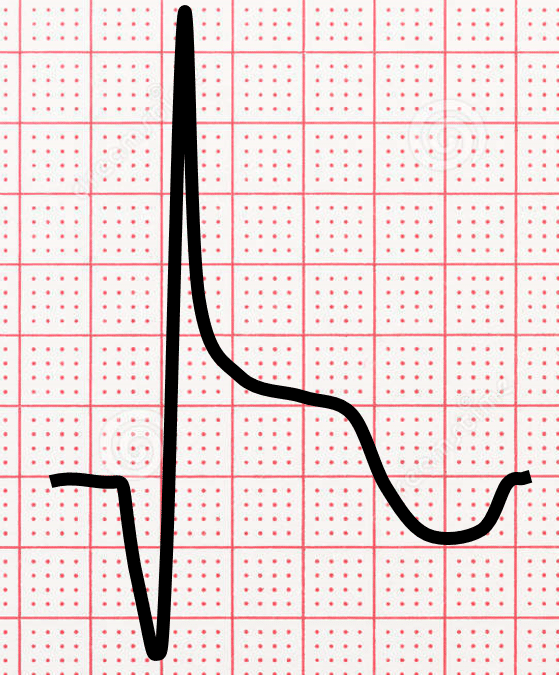
Age undetermined myocardial infarction (48 hours to months old) – Q waves with normal, baseline ST segments and either T wave flattening or T wave inversion.
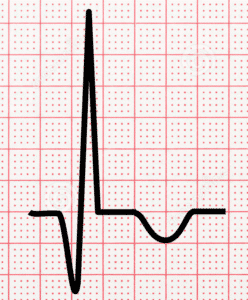
Old myocardial infarction (months to years old) – Q waves with normal, baseline ST segments and normal, upright T waves.
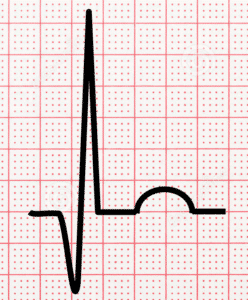
Although these are the definitive ECG changes of an MI, the same ST and T wave changes may occur without Q waves being present. Clinically the patient is still having a heart attack and need immediate attention and treatment, but technically, the ECG is read as “injury.” If this is a difficult concept, it is better to just call ST segment elevation a heart attack and make sure that the patient is treated correctly and efficiently.
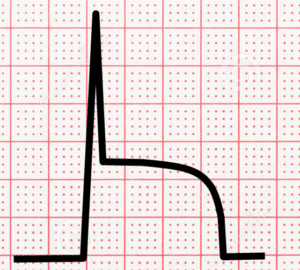
Treatment of Heart Attacks
There is a phrase in cardiology, that “time is heart.” That means that as more time passes, more heart muscle dies. People who think that they are having a heart attack should call an ambulance immediately and be taken to the hospital. The Emergency Room (ER) staff immediately obtains an ECG. If this shows the classic ECG changes then the ER providers will administer medications and likely contact the Cardiology team to consider emergent cardiac catheterization, which will likely result in a stent to open the blocked artery. Long term treatment with a blood thinner like aspirin will be prescribed. Likewise, patients typically receive a statin (cholesterol medication) for life. Other specific treatments will depend on other conditions and the strength of the heart muscle.

